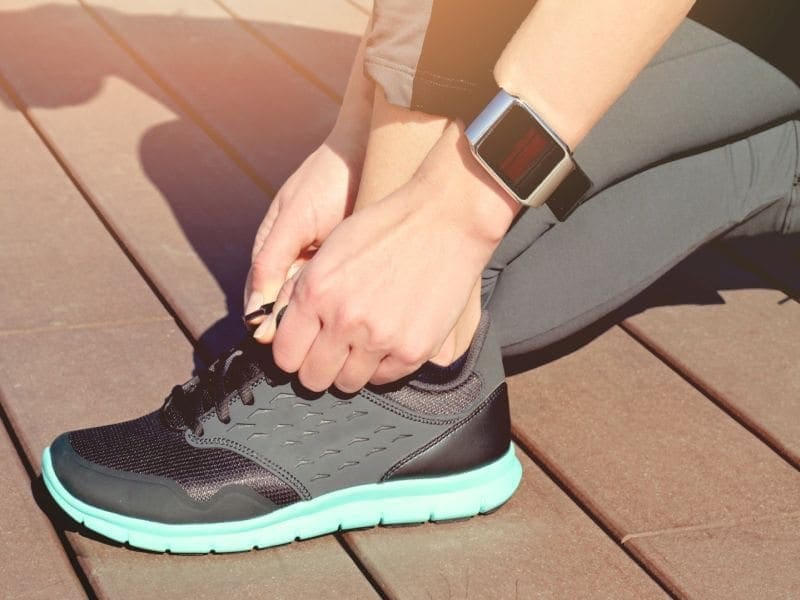Wellness
Clinic Wellness Team. A key factor to spine or back pain conditions is staying healthy. Overall wellness involves a balanced diet, appropriate exercise, physical activity, restful sleep, and a healthy lifestyle. The term has been applied in many ways. But overall, the definition is as follows.
It is a conscious, self-directed, and evolving process of achieving full potential. It is multidimensional, bringing together lifestyles both mental/spiritual and the environment in which one lives. It is positive and affirms that what we do is, in fact, correct.
It is an active process where people become aware and make choices towards a more successful lifestyle. This includes how a person contributes to their environment/community. They aim to build healthier living spaces and social networks. It helps in creating a person’s belief systems, values, and a positive world perspective.
Along with this comes the benefits of regular exercise, a healthy diet, personal self-care, and knowing when to seek medical attention. Dr. Jimenez’s message is to work towards being fit, being healthy, and staying aware of our collection of articles, blogs, and videos.

by Dr Alex Jimenez DC, APRN, FNP-BC, CFMP, IFMCP | Diets, Fitness
Just a bit of vigorous exercise each day could help some children and teens reduce their risk of developing heart problems and diabetes, researchers say.
The new study looked at nearly 11,600 kids, aged 4 to 18, in the United States, Brazil and Europe.
The investigators found that replacing light exercise with as little as 10 minutes a day of intense activity may provide significant cardiometabolic benefits for young people who have relatively large waists and elevated levels of insulin in their blood. These are factors that put them at risk for developing heart problems and metabolic diseases, such as type 2 diabetes.
“The results suggest that substituting modest amounts of vigorous physical activity for longer-duration light exercise may have cardiometabolic benefits above and beyond those conveyed by moderate activity and the avoidance of sedentary behavior,” lead author Justin Moore said.
Moore is an associate professor of family and community medicine at Wake Forest Baptist Medical Center in Winston-Salem, N.C. He noted that more research is needed because additional factors that contribute to disease risk — such as diet and genetics — need to be taken into account.
“If such studies provide robust results, a relatively brief but intense dose of physical activity — perhaps as little as 10 minutes day, which is certainly feasible for most youth — could turn out to be part of a ‘prescription’ for children to achieve or maintain cardiac and metabolic health,” Moore said in a medical center news release.
The study was published recently in the journal Medicine & Science in Sports & Exercise.

by Dr Alex Jimenez DC, APRN, FNP-BC, CFMP, IFMCP | Gut and Intestinal Health, Natural Health, Wellness
Using antibiotics very early in life may lead to developing inflammatory diseases later in life, says a new report published in the Journal of Leukocyte Biology. Using antibiotics in infancy disrupts the normal development and growth of gut bacteria, and in addition to contributing to gut problems such as inflammatory bowel disease (IBD), the altered environment may contribute to other inflammatory diseases such as asthma and multiple sclerosis.
The study also indicates that altering gut bacteria may be a way to treat or prevent some inflammatory diseases.
“Our study demonstrates that gut bacteria in early life do affect disease development in adulthood, but this response can be changed,” said Colby Zaph �of the School of Biomedical Sciences at Monash University, Australia.
The study has important ramifications for using pre- and probiotics, in the administration of antibiotics to newborns, and to the understanding of how gut bacteria play a critical role in the development of �inflammatory diseases such as IBD.
For the study, scientists used two groups of mice. The first group included pregnant females treated with broad spectrum antibiotics during pregnancy and pups treated with broad spectrum antibiotics for the first three weeks of life.
The second group was a control group that consisted of untreated pregnant mothers and pups. The pups in the treated group were weaned at three weeks of age and antibiotic treatment was stopped at the same time. These pups had reduced levels of gut bacteria and were allowed to age normally.
At eight weeks of age, immune cells (CD4 T cells) from both the treated and untreated pups were examined for their ability to induce irritable bowel disease in other mice. The immune cells from antibiotic-treated mice induced a more rapid and more severe disease than those from the untreated mice.
Another recent study connected Gulf War Illness (GWI) to changes in gut bacteria. Researchers found that the chemicals, etc. that veterans were exposed to altered the microbiome � the bacteria that inhabit the gut. The affected microbiota then produce endotoxins, which pass through a thinned lining of the gut (called a leaky gut) and into the blood where they circulate throughout the body.
These compounds trigger an inflammatory response that, in turn, initiates several neurological abnormalities commonly observed in GWI, such as cognitive difficulties, widespread pain, and debilitating fatigue.

by Dr Alex Jimenez DC, APRN, FNP-BC, CFMP, IFMCP | Natural Health, Wellness
A common virus in infancy could trigger a life-long allergy to gluten and lead to celiac disease, an autoimmune disorder which affects one in 133 people in the United States, researchers said Thursday.
Celiac disease is caused when the body has an improper immune response — much like an allergy — to the protein gluten, found in wheat, rye, and barley.
The disease damages the lining of the small intestine, and has no cure. It can only be treated by adopting a gluten-free diet.
But if Thursday’s study in the journal Science — based on experiments using mice — is confirmed in larger studies in people, researchers said a vaccine might be able to prevent celiac disease in the future.
“This study clearly shows that a virus that is not clinically symptomatic can still do bad things to the immune system and set the stage for an autoimmune disorder, and for celiac disease in particular,” said senior author Bana Jabri, director of research at the University of Chicago Celiac Disease Center.
The study found that intestinal bugs called reoviruses can make the immune system overreact to gluten, a protein that is already difficult to digest.
Given to mice, “one common human reovirus triggered an inflammatory immune response and the loss of oral tolerance to gluten, while another closely related but genetically different strain did not,” said the study.
The virus led to a surge in antibodies that may leave a “permanent mark on the immune system that sets the stage for a later autoimmune response to gluten.”
Most infants eat their first gluten-containing cereals around six months of age, a time when their immune systems are more vulnerable to viruses.
“During the first year of life, the immune system is still maturing, so for a child with a particular genetic background, getting a particular virus at that time can leave a kind of scar that then has long-term consequences,” Jabri said.
“That’s why we believe that once we have more studies, we may want to think about whether children at high risk of developing celiac disease should be vaccinated.”
Co-authors of the study were from the University of Pittsburgh School of Medicine; the University of Naples, Italy; Erasmus University Medical Center in Rotterdam, Netherlands; Massachusetts General Hospital; Harvard Medical School; the Broad Institute at MIT; the University of Montreal; and Stanford University.

by Dr Alex Jimenez DC, APRN, FNP-BC, CFMP, IFMCP | Health News El Paso
(HealthDay News) — Wrist-worn activity trackers such as Fitbit don’t reliably assess heart rate, a new study finds.
While the devices may have some legitimate benefits, they shouldn’t be used for medical purposes, researchers suggest.
Evaluating four wearable activity trackers from Fitbit, Basis and Mio, the investigators compared results to those from an electrocardiograph (EKG). The researchers found results varied among the different models, and were much less accurate during exercise than at rest.
“These devices are probably good enough to inform consumers of general trends in their heart rate — high or low — [but] it’s important to have more accurate information when physicians are relying on this data to make decisions on medications or other tests and treatments,” said Dr. Mitesh Patel.
Patel is an assistant professor of medicine and health care management at the University of Pennsylvania. He wasn’t involved in the study.
However, the study’s lead author cautions against making too much of the discrepancies.
“At any moment, the tracker could be off by a fair bit. But at most moments, it won’t be,” said Lisa Cadmus-Bertram, an assistant professor of kinesiology at the University of Wisconsin at Madison.
“The heart-rate feature performed better at rest,” she said. “They’re not as precise during exercise.”
A 2014 survey by PricewaterhouseCoopers found that 20 percent of American adults owned a wearable activity tracker.
For the new study, 40 healthy adults, aged 30 to 65, were recruited to test the Fitbit Surge, Fitbit Charge, Basis Peak and Mio Fuse.
Generally, when compared with the EKG results, the activity trackers were near the correct mark, Cadmus-Bertram said. But occasionally, their estimates of heart rate could swing too high or too low.
At rest, the Fitbit Surge was most accurate; Basis Peak was least accurate, the study authors said.
During exercise on a treadmill at 65 percent of maximum heart rate — defined as 220 beats per minute minus age — accuracy suffered more.
The monitors could overestimate heart rate by as much as 39 beats per minute (Fitbit Surge), or underestimate it by as much as 41 beats per minute (Fitbit Charge), the study found.
The findings support those of a study released last month at the American College of Cardiology annual meeting. Depending on the type of activity, the wrist devices were up to 34 beats per minute off, those researchers found.
Again, the devices were least accurate during exercise.
Some wrist-worn activity trackers use a light-emitting diode, or LED, that measures heart rate by detecting changes in the amount of blood in the skin.
Patel said accuracy may be a problem because the devices move around on the arm, especially during exercise.
Meanwhile, Fitbit’s maker said its fitness trackers aren’t intended to be medical devices. The company issued a statement in response to the new study.
“We conducted extensive internal studies which show that Fitbit’s PurePulse technology performs to industry standard expectations for optical heart rate on the wrist,” the statement said. Moreover, “Fitbit devices were tested against properly calibrated industry standard devices like an EKG chest strap across the most popular activities performed worldwide — including walking, running, biking, elliptical and more.”
Cadmus-Bertram cautioned that the data for the new study were collected about a year ago.
“Not only have newer models since been released, but the algorithms behind the data are presumably being updated and improved on a regular basis,” she said. “So the results we found might be different if we did the study again now.”
In general, she’s remains a fan.
“On the whole, fitness trackers still provide a tremendous amount of useful information to the average user who just wants some feedback to help them to increase their exercise level,” Cadmus-Bertram said.
The study findings were published online April 11 in the Annals of Internal Medicine.
SOURCES: Lisa Cadmus-Bertram, Ph.D., assistant professor, kinesiology, University of Wisconsin-Madison; Mitesh Patel, M.D., M.B.A., M.S., assistant professor, medicine and health care management, Perelman School of Medicine and the Wharton School, University of Pennsylvania, Philadelphia; Fitbit, statement, April 10, 2017; April 11, 2017, Annals of Internal Medicine, online

by Dr Alex Jimenez DC, APRN, FNP-BC, CFMP, IFMCP | Fitness, Natural Health, Wellness
If you’re thinking about adding a dog to the family, you have two good reasons to say “yes,” say researchers from the University of Alberta. Their study found that babies from families with pets � 70 percent were dogs � had higher levels of two microbes that protect against allergies and obesity.
There Is A Catch
“There’s definitely a critical window of time when gut immunity and microbes co-develop, and when disruptions to the process result in changes to gut immunity,” said pediatric epidemiologist Anita Kozyrskyj.
Her team’s research found that exposure to pets in the womb or up to three months after birth increases the amount of two bacteria, Ruminococcus, which has been linked to a reduced risk of childhood allergies, and Oscillospira, which has been linked to a lower risk of obesity.
“The abundance of these two bacteria were increased twofold when there was a pet in the house,” said Kozyrskyj, adding that the pet exposure was shown to affect the gut microbiome indirectly � from dog to mother to unborn baby � during pregnancy as well as during the first three months of the baby’s life. In other words, even if the dog had been given away for adoption just before the woman gave birth, the healthy microbiome exchange could still take place.
The study also found that the immunity-boosting exchange occurred even in three birth scenarios known for reducing immunity: C-section versus vaginal delivery, antibiotics during birth, and lack of breastfeeding.

In addition, the study suggested that pets in the house reduced the likelihood of the transmission of vaginal GBS (group B Strep) during birth, which causes pneumonia in newborns and is prevented by giving mothers antibiotics during delivery.
Kozyrskyj theorizes that one day there may be a “dog in a pill” to help prevent allergies and obesity.
“It’s not far-fetched that the pharmaceutical industry will try to create a supplement of these microbiomes, much like was done with probiotics,” she said.
Previous research has also found that children raised in homes with pets have fewer allergies. A study published in Clinical & Experimental Allergy found that children who were exposed to pets before the age of six months had fewer allergy-related conditions such as asthma, hay fever, eczema, and upper respiratory infections as they grew older. Another study found that babies who lived in homes with pets had fewer colds and ear infections during their first year of life than babies living in homes without pets.
Pets are also good for mom and dad. Dogs have been found to lower the risk of heart disease, stress, depression, and chronic pain.

by Dr Alex Jimenez DC, APRN, FNP-BC, CFMP, IFMCP | Health News El Paso
(HealthDay News) — When a bedside alarm goes off in a child’s hospital room, anxious parents expect nurses to respond pronto.
That rarely happens, however, and a new study helps explain why.
Reasons Why Response Time In Question
Researchers found that nurses are usually quick to react when alarms are urgent. But, they’re slower to respond at the end of the workday or when they suffer from “chronic alarm fatigue.”
Also, having parents present doubled the response time on average, the study found.
But, delayed response time didn’t threaten any of the 100 patients evaluated in the study, the researchers said. And just half of 1 percent of more than 11,000 alarms analyzed were deemed “actionable,” or crucial.
“The nurses were overall doing a great job predicting which alarms were going to be important,” said study lead author Dr. Christopher Bonafide, an assistant professor of pediatrics with the Children’s Hospital of Philadelphia. “Their intuition was correct.”
The high number of false alarms in U.S. hospitals has led to “alarm fatigue” among nurses. As a result, the Joint Commission — the organization that accredits American hospitals — issued new guidelines for managing alarm monitors.
The beeps and buzzes alert staff to medical problems facing patients such as high heart rates, dips in oxygen levels in the blood and dangerous heartbeat patterns, Bonafide said.
Too Many False Alarms
But, many false alarms are caused simply by babies moving around and disrupting sensors, he said.
“When an alarm goes off and the nurse is already in the patient’s room, they can immediately look up, check on the patient, and make sure everything is OK,” Bonafide said. “When a nurse isn’t in the room, some hospitals like ours have the ability to send them a text message to the phone that they are carrying.”
For this study, researchers analyzed video of 38 nurses caring for 100 patients at Children’s Hospital of Philadelphia from 2014-2015.
Almost all of the 11,745 beeps and buzzes that sounded were valid. And 50 were deemed critical, “the important ones we would not want anyone to miss,” Bonafide said. Nurses responded in about a minute, on average, to these alarms.
However, overall, half of the total alarms took 10.4 minutes or more to address, the study found.
Years on the job and caseload accounted for some differences in response time.
“Nurses with under one year of experience responded faster than nurses with one or more years’ experience,” Bonafide said. “Nurses taking care of just one patient responded faster than those caring for more than one patient. And for each hour that passed in a nurse’s shift, their response time got a little bit slower.”
Other factors appeared to contribute, too.
“If family members were absent from the bedside, response time was faster than if parents were there,” he said. The median response time was six minutes when family members weren’t there, and 12 minutes when they were.
Also, “more complex” patients got faster responses, Bonafide said. “And patients who had prior alarms that required interventions to be taken got faster responses than those who had not had those experiences.”
Marjorie Funk, a professor at Yale University School of Nursing, praised the study. She said the findings shouldn’t worry parents about leaving their child’s side at hospitals.
“Alarms for serious events sound different, and nurses respond immediately,” Funk noted. “Other alarms may require their attention, but they can finish what they are doing for another patient before responding or can ask a colleague to respond.”
Bonafide said there are no guidelines that tell nurses how quickly they should response to various alarms. But, he thinks the system needs improvement.
“There’s quite a lot we can do to improve the safety and performance of these systems and make them work for us and provide truly useful information that helps nurses identify patients who are getting into trouble,” he said.
When a child is hospitalized, Bonafide and Funk agreed that it’s appropriate for parents to ask questions. These might include asking physicians and nurses, “Why is my child being continuously monitored? What problems are you looking for?” and “What should I do if an alarm goes off?”
The study appears in the April 10 issue of JAMA Pediatrics.
SOURCES: Christopher Bonafide, M.D., assistant professor, pediatrics, Children’s Hospital of Philadelphia; Marjorie Funk, Ph.D., RN, professor, nursing, Yale University School of Nursing, New Haven, Conn.; April 10, 2017, JAMA Pediatrics
News stories are written and provided by HealthDay and do not reflect federal policy, the views of MedlinePlus, the National Library of Medicine, the National Institutes of Health, or the U.S. Department of Health and Human Services.

by Dr Alex Jimenez DC, APRN, FNP-BC, CFMP, IFMCP | Health, Nutrition, Wellness
It�s spring and many people will be heading back to the gym in the hope of busting cellulite, a seemingly unshakeable curse for many women. However, cellulite, which has both genetic and hormonal causes, can be improved with a comprehensive long-term strategy. Here are a few facts and fictions about the dreaded �orange-peel effect� before you get started.
Exercise Gets Rid Of Cellulite
FALSE. Unfortunately, exercise alone isn�t enough to shift those lumpy fatty deposits anchored deeply under the skin. This type of fat corresponds to metabolized fat from food and genetic fat stores often found around the buttocks and thighs. However, exercise (walking, running, water biking, skipping) forms part of an overall cellulite-busting strategy, giving a real boost to venous and lymphatic circulation.
Slim women have cellulite too! Losing weight by forcing yourself to follow a drastic and highly restrictive diet won�t solve the problem. (Shutterstock)
Hormonal Balance Affects Cellulite
TRUE. Harmonizing your hormonal balance could help reduce and halt the further development of adipocyte fat cells. A lack of progesterone can often create a cellulite effect. Borage oil and chaste tree are herbal remedies that are recommended for boosting the hormone progesterone. Changing to a contraceptive pill with a different dose of hormones can also be an option. Ask your health care provider for more information.
Cutting Calories Is The Only Way To Get Rid Of Cellulite
FALSE. Slim women have cellulite too! Losing weight by forcing yourself to follow a drastic and highly restrictive diet won�t solve the problem. In fact, it can prove counterproductive, since you also risk losing muscle mass and accentuating any cellulite buildup.

A Mediterranean diet based on foods rich in antioxidants (fruit and vegetables, seeds, nuts, wholegrain cereals) is the best weapon of mass destruction in the fight against lumpy deposits. (Shutterstock)
The Mediterranean Diet Is The Most Effective
TRUE. Cellulite, by definition, is an inflammatory condition. A Mediterranean diet based on foods rich in antioxidants (fruit and vegetables, seeds, nuts, wholegrain cereals) is the best weapon of mass destruction in the fight against lumpy deposits. Foods containing fast-acting sugars, with high glycemic indexes, should generally be avoided because they promote the storage of fat and cause insulin levels to spike. Watch out for hidden salt too, which is often responsible for water retention. Avoid soup in the evening and fill up on protein.
Herbal Remedies Can Help Tackle Cellulite
TRUE. The key active ingredients in certain plants can help the body to eliminate toxins, flushing out tissue that�s full of water and fat. These include dandelion, birch, fennel, artichoke, black radish, fumaria, red vine leaf, witch hazel and ginkgo biloba, which can help boost blood flow back to the heart and aid the lymphatic system. Drinking lots of water will also stimulate digestive transit to help get rid of inflammatory toxins.

Call Today!
Follow @htlifeandstyle for more.

















